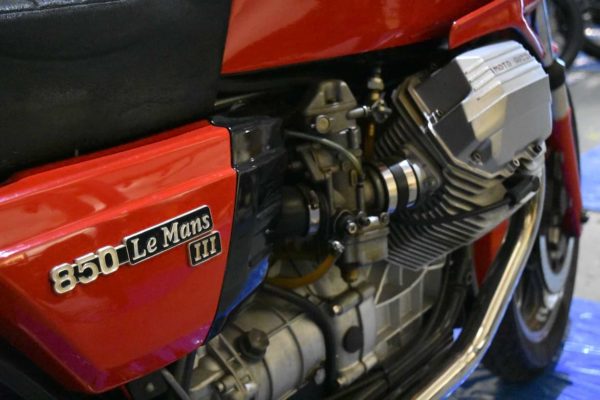125 CC motorbikes are pretty famous, especially among beginners who don’t want to ride high CC motorbike engines as it’s precarious, which might cause you to indulge in a motorbike accident. And that’s why the question arises, what are the advantages and disadvantages of a 125cc motorbike compared to other engine sizes?
Riding a 125 CC motorbike has several advantages, including affordability, maneuverability, accessibility, and fuel efficiency. However, it is important to consider the limitations, such as limited speed and power, which make it less suitable for long-distance riding. If you are a beginner, it is advisable to avoid high CC motorbikes as they have powerful acceleration, weight, and distortion, which can pose serious safety concerns.
Let’s consider what it means and what you can do about it.
While writing this post, I leave no stone unturned so you can know about some advantages and disadvantages of 125 CC motorbike compared to other engine sizes.
Table of Contents
What are the Advantages and Disadvantages of a 125cc Motorbike Compared to Other Engine Sizes?
125 CC motorbikes are pretty famous, especially among beginners, as high CC motorbikes can cause them to indulge in motorbike accidents, and that’s why the question arises, what are the advantages and disadvantages of a 125 CC motorbike compared to other engine sizes?
Advantages of a 125cc Motorbike:
Affordability:
Motorcycles with an engine displacement of 125cc are frequently more economical than their larger counterparts. These bikes offer reduced initial expenses, lower insurance premiums, and greater fuel efficiency. Hence, they are a financially prudent choice for numerous riders, particularly novices, and individuals with financial constraints.
Maneuverability:
By their compact dimensions and reduced weight, 125cc motorbikes boast exceptional maneuverability. These bikes exhibit impressive agility, ideally suited for effortlessly weaving through congested city traffic, navigating narrow streets, and traversing crowded areas.
The inherent compactness of these motorcycles enables riders to effortlessly handle tight spaces, making parking hassle-free.
Accessibility:
Numerous countries allow individuals to ride a 125cc motorbike using a regular driver’s license, eliminating the need for a specialized motorcycle license. This inclusivity expands the accessibility of these motorcycles to a broader spectrum of riders who may not possess a motorcycle-specific license.
Such a provision serves as an entry point for individuals who are either new to motorcycling or seek a practical means of transportation, bridging the gap and making riding more accessible to a broader audience.
Fuel Efficiency:
125cc motorbikes are renowned for their impressive fuel efficiency, enabling riders to travel longer distances while consuming less fuel. This quality makes them an economical option, particularly well-suited for daily commuting or regular use, especially in urban environments with frequent stop-and-go traffic.
Their ability to optimize fuel consumption further enhances their appeal as a cost-effective transportation solution for riders seeking efficiency and affordability.
Also, read my previous post where I discussed what’re some best 125 CC motorbikes for short females, CLICK HERE to read more.
Disadvantages of a 125cc Motorbike:
Limited Speed and Power:
125 cc motorbikes have limited top speeds and power output compared to larger engine sizes. They may struggle to reach higher speeds or provide the acceleration some riders desire, especially when carrying a passenger or riding on highways.
Less Suitable for Long Distances:
Given their smaller engine size and limited power output, it’s essential to acknowledge that 125cc motorbikes may not be the most optimal choice for long-distance touring or highway cruising.
Instead, they excel in shorter commutes or urban riding scenarios, where their exceptional maneuverability and fuel efficiency genuinely shine.
These motorcycles are ideally suited for navigating congested city streets, where their compact size allows for easy maneuvering through traffic and agile handling.
While they may not be the top choice for extended highway rides, they offer tremendous value and performance within their designated scope of shorter commutes and urban environments.
Passenger and Cargo Capacity:
125cc motorbikes generally have limited passenger and cargo capacity. Their smaller frames and engines may not comfortably accommodate passengers or significant luggage. If you frequently ride with a passenger or require ample storage space, a larger engine size may be more suitable.
Why High CC Motorbikes Aren’t Best for Beginners?
People often recommend staying away from high-CC motorbikes for safety, but do you know why high-CC motorbikes aren’t best for beginners?
Here’re some reasons why high CC motorbikes aren’t suitable for beginners and why they should avoid them. ṣ
Power and Acceleration:
High CC motorbikes are designed for experienced riders who have developed the necessary skills to handle their power and acceleration. These bikes can be high-speed and may have aggressive acceleration, which can be overwhelming for beginners. A lack of experience in controlling such power can lead to accidents or loss of control.
Weight and Handling:
High-CC bikes tend to be larger and heavier than their lower-CC counterparts. Maneuvering and handling these bikes require more strength and skill, which beginners may not possess initially.
It can be challenging to control the weight during low-speed maneuvers, such as parking or U-turns, increasing the risk of tipping over or losing balance.
Intimidation and Confidence:
Riding a high CC motorbike as a beginner can intimidate and affect your confidence. The sheer power and speed potential of these bikes can create a sense of unease and make it difficult to fully enjoy the riding experience.
Building confidence gradually on a smaller, more manageable bike allows beginners to develop essential skills and become more comfortable on the road.
Safety Concerns:
Safety should always be a top priority when riding a motorbike. High CC bikes can tempt beginners to push their limits or engage in reckless riding, increasing the risk of accidents.
Starting with a lower CC bike allows beginners to focus on developing essential riding skills, understanding road dynamics, and becoming familiar with traffic patterns without being overwhelmed by excessive power.
Cost Considerations:
High CC motorbikes often come with a higher price tag, both in terms of the initial purchase price and ongoing maintenance costs. For beginners still exploring their riding preferences and skill development, investing in an expensive high-CC bike may not be practical.
Initially, opting for a more affordable and manageable bike allows beginners to gain experience before considering a higher CC model.
Frequently Asked Questions:
What are the essential safety measures for motorbike riders?
Essential safety measures include wearing appropriate safety gear such as helmets, gloves, jackets, and boots, following traffic rules, maintaining a safe distance from other vehicles, and practicing defensive riding techniques.
What should I check before every motorbike ride?
Before every ride, check your tire pressure, brakes, lights, indicators, oil level, and fuel level. Also, ensure that your mirrors are correctly adjusted for optimal visibility.
What’s the difference between a cruiser and a sport bike?
Cruisers are known for their relaxed riding position, low seat height, and classic styling. Sportbikes, on the other hand, have a more aggressive riding posture, and higher foot pegs, and are designed for higher performance and speed.
What’s the break-in period for a new motorbike?
The break-in period usually involves the first 500-1000 miles of riding where you should avoid high speeds, hard acceleration, and prolonged idling. This helps the engine components settle in properly.
How often should I change the motorbike’s oil?
Oil change intervals vary by manufacturer and model. Generally, it’s recommended to change the oil every 3,000 to 6,000 miles or as specified in your motorbike’s owner’s manual.
Final Verdict:
What are the advantages and disadvantages of a 1255 CC motorbike compared to other engine sizes? Affordability, maneuverability, accessibility, and fuel efficiency are some advantages of riding 125 CC motorbikes. At the same time, limited speed and powers, less suitable for long-distance riding are some disadvantages.
If you’re a beginner, you shouldn’t go with the high CC motorbikes as it has excellent power and acceleration, weight and distortion, and some serious safety concerns.
Consider all advantages and disadvantages before buying 125 CC motorbikes so that you always choose the motorbike which suits you best.
John, this side! My passion for motorbikes started when I was 12. I experienced many accidents and even lost some friends too. And it inspired me to create this website so that no parents in this world would lose their child while enjoying riding.


